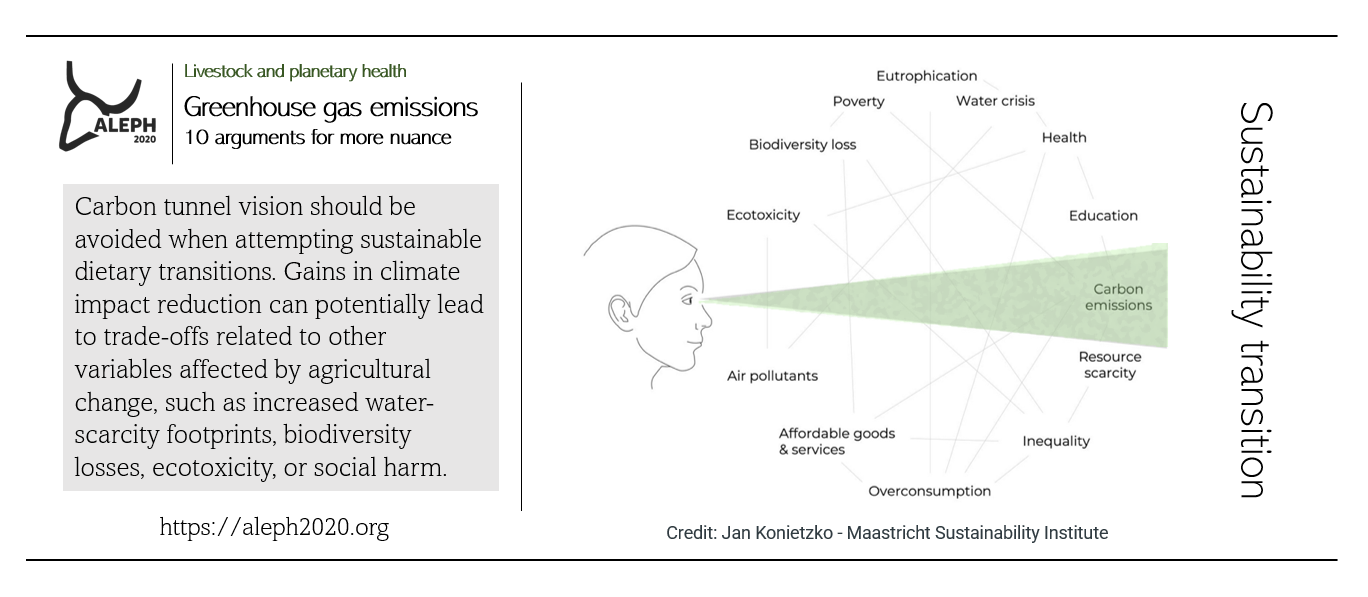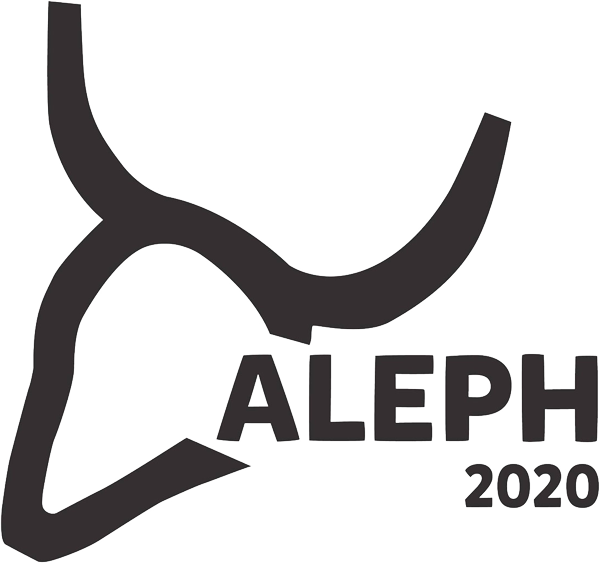Livestock and greenhouse gas emissions: 10 arguments for more nuance
Livestock and greenhouse gas emissions
This subsection contains the following topics:
- Situating the problem
- Global data should not be used to evaluate local contexts
- Further mitigation is possible and ongoing
- Restricting animal source foods only leads to small gains
- Dietary focus distracts from more impactful interventions
- Nutrition should not be overlooked when comparing foods
- Co-product benefits of livestock should be accounted for
- Livestock farming also sequesters carbon
- Rewilding comes with its own climate impact
- Large-scale afforestation of grasslands is not a panacea
- Methane should be evaluated differently than CO2
Situating the problem
The overall food system contributes to 20–35% of human-caused greenhouse gas emissions. Within this, agriculture and fisheries contribute 40%, while land use/land-use change and supply chains each contribute around 30%. Livestock are the primary source of agricultural emissions, with methane from ruminants and rice alone constituting one-third of food emissions. Due to the higher emissions associated with animal-based foods compared to plants, dietary policies often focus on livestock products. The livestock sector indeed bears a substantial responsibility for climate impact and emission budgets. While some advocate for plant-based eating as a means to reduce environmental impact, the reality is more nuanced. Comparing the climate impact of single foods from animal and plant origin is not at all straightforward. All-too often, this is done in a misleading manner. Each dietary change has both positive and negative effects. A better approach is to contrast wholesome dietary patterns and evaluate the broader ecological, nutritional, and societal trade-offs.

Global data should not be used to evaluate local contexts
Livestock's contribution to global anthropogenic greenhouse gas emissions is 12%, based on the latest FAO estimate. However, emission intensities vary worldwide. Global data do not reflect local contexts and should not be extrapolated when assessing the climate impact of livestock within a given region or production system. Factors like feed digestibility, genetics, climate conditions, and management practices give rise to a lot of variability. Regional differences in factors like wealth, draft power, fuel, and religious significance also contribute to differences in emission intensities.
Further mitigation is possible and ongoing
The argument against livestock assumes status quo and fails to consider the potential for improvement, which is still substantial. Feed optimization, veterinary care, smart manure utilization, better herd management, and various other strategies could lead to meaningful reductions in future carbon intensities. Biogas valorization, improved integration with crop agriculture, reducing food wastage, reusing meat-processing by-products, and increasing the consumption of edible offal are additional mitigation options. The Australian red meat sector, for instance, aims to achieve carbon neutrality by 2030 through a combination of carbon sequestration and mitigation strategies. In the EU27 plus UK, agricultural emissions, including methane and N2O, have already seen substantial decreases as well. Although global methane emissions from ruminants have increased, Europe and Russia have successfully reduced such emissions, while the US has remained relatively stable. Overall, there are still numerous opportunities to decrease the emissions coming from livestock production by implementing various strategies and reducing waste.
Restricting animal source foods only leads to small gains
Filling the gap left by restricting animal source foods requires higher crop production to meet nutritional needs, which would generate its own emissions. The potential gain can therefore not be seen as a simple elimination of the current 12% of global greenhouse gas emissions by livestock but should compensate for more crop-driven emissions. In addition, gains within the dietary carbon footprint alone should not be confused with the much smaller gains within one's total carbon footprint. Net gains from dietary transition would thus be a lot smaller than often assumed. For instance, removing all livestock in the US may lead to just 3%-reduction in national emissions, and removing all dairy would result in a mere 1-% reduction, while creating nutrient security concerns. In high-income countries, adopting plant-based diets would result in a small (1-6%) reduction of one's total carbon footprint and meaningfully only so if the diet is sustained, which is seldom the case. Few vegans and even vegetarians remain committed to the diet for longer periods.
Dietary focus distracts from more impactful interventions
Matters of diet seem to be elbowing other topics out of the climate change discourse. However, as outlined in above in Argument 3, a shift to plant-based diets would only save a small amount of carbon. The often used comparison of the GHG emissions of livestock to the transport sector is misleading for a number of reasons (detailed in the text below). Tourism, digitalization, and fashion all contribute to global greenhouse gas emissions, but these lifestyle aspects receive less attention than dietary choices. Livestock serve as convenient scapegoats. A single roundtrip flight offsets years of vegetarianism, which is still minor compared to private jet emissions. Ultimately, a small minority generates most global emissions.
Nutrition should not be overlooked when comparing foods
Some nutrient-dense foods and beverages with higher carbon footprints offer valuable nutritional value that (partially) offsets their environmental impact. The main challenges in the global food system are not solely related to caloric efficiency but also to ensuring adequate essential nutrition. Protein and key micronutrient levels are crucial for optimal health, and many of these key essential nutrients are best obtained from animal source foods. Using CO2-eq per kg (or kcal) is not a suitable basis for comparing foods with different nutritional profiles. Applying such metrics in dietary scenarios to reduce climate impact may compromise micronutrient supply and promote ultra-processed food solutions, both of which are harmful for health. A poor status of public health contributes substantially to carbon footprints. Dietary policies aimed at reducing greenhouse gas emissions should never be nutritionally harmful or incomplete.
Co-product benefits of livestock should be accounted for
When assessing animal production systems, the value of co-products should not be overlooked. Life cycle analyses usually do not fairly distribute emissions from services and by-products of the animal industry, overstating the impact of foods. These relate to non-edible (e.g., hides, wool, bone, manure) and edible parts of the carcass (e.g., offal, which hold a large part of the nutritional value). If these factors were to be properly factored in, carbon footprints of animal source foods would decrease. Yet, proper allocation methods are required to account for the various uses and markets of co-products, which can be complex.
Livestock farming also sequesters carbon
Calculations of livestock’s climate impact should not only factor in carbon emissions but also sequestration. Grazing lands, which cover a vast portion of global land mass, are huge reservoirs of soil organic carbon. Adequate grassland management improves soil carbon stocks and may substantially offset emissions in regions where grazing lands dominate. 'Regenerative' agriculture practices have shown impressive results in sequestering carbon and enhancing soil fertility. Despite this potential, 'regen ag' is often ignored in conventional assessments, among other reasons due to assumptions about carbon sequestration limitations and land requirements. However, there is a large amount of degraded grassland and arable land available, which presents an opportunity for long-term carbon sequestration.
Rewilding comes with its own climate impact
Discussions on dietary greenhouse gas emissions often refer to carbon savings through rewilding and afforestation. However, these scenarios tend to underestimate the above-mentioned role of grasslands as carbon sinks as well as the emissions associated with rewilding itself. Climate benefits of rewilding scenarios should not be overstated. They replace livestock with animals that are also methanogenic. Moreover, the wild fauna can affect forest carbon sequestration through browsing. In many regions, current levels of livestock methane may not be all that different from natural baseline levels.
Large-scale afforestation of grasslands is not a panacea
Protecting forests is a must, but a one-size-fits-all strategy of massive afforestation is irrelevant in open ecosystems that rely on grazing. Forests do not sequester more carbon than what is obtained with well-managed grasslands in temperate regions, are more vulnerable to wildfire, take decades to be effective, and cause ecosystem harm in the case of ill-adapted tree monocultures. Grazing livestock can indeed sequester carbon at rates similar to afforestation, especially in grasslands where deeper layers of soil are crucial for carbon storage. Also, trees and livestock are not incompatible. Integrating agroforestry and discrete tree planting options within existing farm systems can increase woodland cover without displacing livestock, providing more resilience to fires and climate change while sequestering carbon effectively.
Methane should be evaluated differently than CO2
Globally, methane is a potent greenhouse gas and remains a challenge due to its production by various sources, including geological and fossil fuel emissions, wetlands, rice farming, and landfills. However, evaluating the impact of methane on global warming kinetics needs nuance. Using conventional C02-equivalent accounting methods for methane to compare foods in the context of global warming can be misleading. Unlike CO2 from fossil fuels, methane from ruminants is a short-lived pollutant within a biological cycle. It adds no new carbon to the atmosphere, provided its volume does not increase. The caveat is that herd growth and productivity require careful mitigation. In some studies using a more differentiating metric (GWP*), which considers methane's shorter lifespan, beef and sheepmeat were found to have a lower warming impact than previously claimed. Mitigation of biogenic methane emissions from livestock is feasible and can result in zero CO2-warming-equivalent emissions, or even cooling.
